Photo: Valerie Macon/AFP via Getty Images
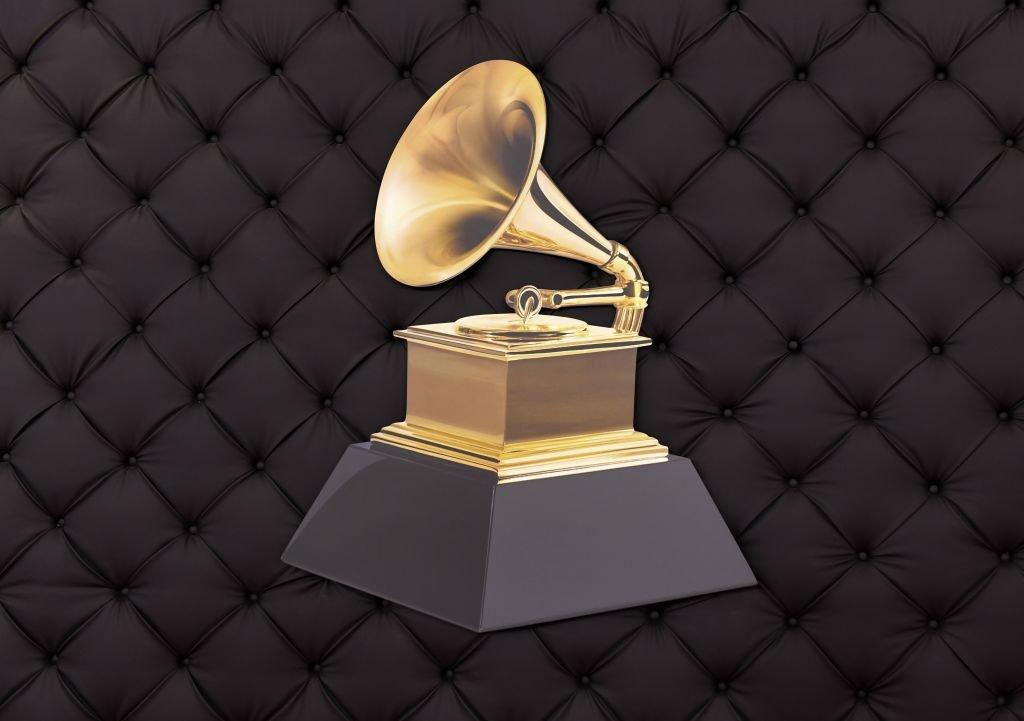
news
The Recording Academy Establishes Black Music Collective
The newly launched collective comprises a group of prominent Black music creators and professionals who share the common goal of amplifying Black voices within the Recording Academy and the wider music community
The Recording Academy has today (Sept. 3) announced the creation of its Black Music Collective (BMC), a group of prominent Black music creators and professionals who share the common goal of amplifying Black voices within the Academy and the wider music community.
As part of the Recording Academy's commitment to evolving hand-in-hand with its membership, BMC will serve as a space for members to speak openly about new and emerging opportunities in Black music across all genres and identify ways to drive more representation.
The launch of BMC follows the Recording Academy's recent partnership with Color Of Change, the nation's largest online racial justice organization, in July, which set forth to create a Black music advisory group. The BMC fulfills this promise and is bringing together creators and business leaders to create a pipeline of future industry trailblazers. Leaders will meet regularly and initiate programs that will encourage participation and accelerate Black membership in the Recording Academy.
Jeffrey Harleston, Jimmy Jam, Quincy Jones, Debra Lee, John Legend, and Sylvia Rhone will serve as honorary chairs of the BMC. A distinguished leadership committee will be confirmed in the coming weeks and will work in sync with the honorary chairs to propel the collective's mission. Recording Academy Trustee Riggs Morales and Washington, D.C., Chapter Executive Director Jeriel Johnson will lead the initiative internally.
"The Black Music Collective is necessary to help drive the Recording Academy into a new era. Creating an open space for Black music creators can only benefit our membership as a whole," Harvey Mason jr., Chair and Interim President/CEO of the Recording Academy, said. "Through the past few months, I've been personally invested in propelling this collective along with Chapter leadership within the Academy. Together, we will elevate Black music creators within our organization and the industry at large."
"As Black music continues to drive culture, it is essential we grow and maintain representation within the Academy and the music industry," Valeisha Butterfield Jones, Chief Diversity & Inclusion Officer of the Recording Academy, said. "We're thrilled to help develop the leaders of tomorrow with impactful educational and experiential programs that we will announce in coming weeks."
In March 2018, the Recording Academy established a third-party task force to examine issues of diversity and inclusion within the Academy and the broader music community. The Academy has since taken action on the Task Force's initial assessment and recommendations and has made additional strides to facilitate a culture of belonging while recognizing the need to focus on underrepresented communities. Recent initiatives include the hiring of a Chief Diversity & Inclusion Officer, a $1 million donation to Color Of Change, alignment with #TheShowMustBePaused movement created by Jamila Thomas (Atlantic Records) and Brianna Agyemang (Platoon), and the development of an industry Inclusion Rider and Toolkit to be released later this year.
Stay up to date on the Recording Academy's progress, future announcements and recent initiatives on diversity and inclusion.
Recording Academy Invites & Celebrates Its 2020 New Member Class
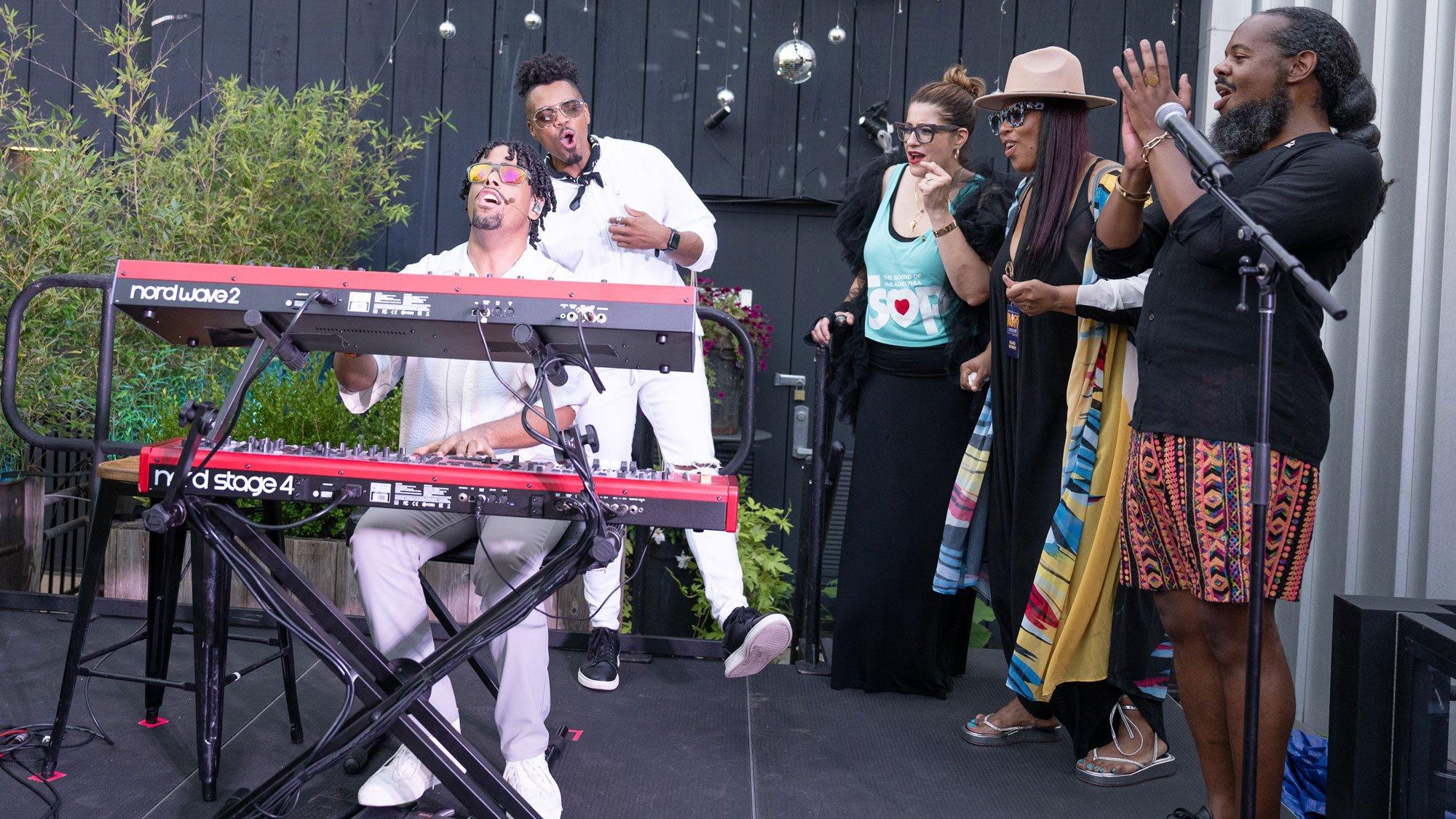
Photo: Lisa Lake
news
How The Recording Academy's RAA+D Network Is Supporting Artists & Creators With Disabilities And Building Accessibility For All
Through RAA+D, its Disability + Accessibility Network, the Recording Academy is building true accessibility for everyone in the music community and championing artists and music professionals with disabilities.
Navigating the multitude of challenges and roadblocks within the music industry can often seem like a herculean feat. Musicians and industry professionals are expected to master the intricacies of creating and performing music while also juggling the economics and business dealings of the industry. These challenges can be even more daunting for creators and industry professionals with disabilities.
As the leading global community of music professionals, the Recording Academy is acutely aware of these unique challenges, and it's dedicated to supporting creators and professionals from all backgrounds and experiences.
That's the vision behind RAA+D (Disability + Accessibility), the Recording Academy's new member resource group aimed at supporting artists, creators and professionals with disabilities and advancing their needs and initiatives. Unveiled during the Recording Academy Philadelphia Chapter's inaugural Block Party during Disability Pride Month last month, RAA+D is dedicated to achieving true accessibility for everyone in the music community and going beyond mere compliance.
Through RAA+D, the Academy is working to ensure that all members can fully engage in the organization's programs by providing elements such as live American Sign Language (ASL) interpreters, accessibility ramps at our shows and events, and closed captioning for our programs.
"In recent years, the Academy has made significant strides to ensure that individuals from all walks of life feel supported and a sense of belonging within the Recording Academy spaces," Ryan Butler, Vice President of Diversity, Equity & Inclusion for the Recording Academy, said in an interview. "Through the implementation of RAA+D, the Academy aims to create a robust support system for the disability community, providing opportunities for networking and celebrating their contributions to the greater music community."
Read More: How The Music Industry Must Work To Close The Accessibility Gap: 4 Eye-Opening Takeaways
RAA+D's initiatives are driven by a commitment to foster an inclusive environment where accessibility and community are priorities. To help accomplish this, the Recording Academy has partnered with RAMPD (Recording Artists and Music Professionals with Disabilities), one of the leading organizations supporting music creatives with disabilities, as a community partner to advance the work of RAA+D on a year-round basis.
RAA+D is part of the Recording Academy's DREAM (Diversity Reimagined by Engaging All Musicmakers) Initiative, an inclusive network of member resource groups spotlighting the contributions and initiatives of creators and professionals from diverse cultural backgrounds.
Spearheaded by the Academy's Diversity, Equity & Inclusion (DEI) team, the DREAM Initiative recently launched multiple resource groups, including Gold Music Alliance, which honors and elevates Pan-Asian members and allies within the GRAMMY organization and the music industry, and Academy Proud, which celebrates and honors LGBTQIA+ Academy members and music industry professionals. Other active groups within the DREAM Initiative include Women in the Mix, launched in 2019, which builds community for all women and increases representation within the Recording Academy and in the music industry; the Black Music Collective, launched in 2020, which is a group of prominent Black music creators and professionals focused on advancing Black music and culture; and GRAMMYs Next Gen, which supports and empowers the next generation of music creators and professionals.
As the Recording Academy continues to establish membership networks that align with our wide-spanning mission and core values, the DREAM Initiative will launch multiple member resource groups spotlighting the diverse music community, including groups celebrating and supporting Latin and Indigenous creators and music professionals.
"As we look to the future, we are thrilled about the transformative potential of RAA+D," Butler reflected. "This initiative reaffirms our commitment to inclusivity and the recognition of the diverse talents within the disability community. We are excited to see the positive impact it will have on our organization and our members."
With additional reporting from John Morrison
Latest News & Exclusive Videos
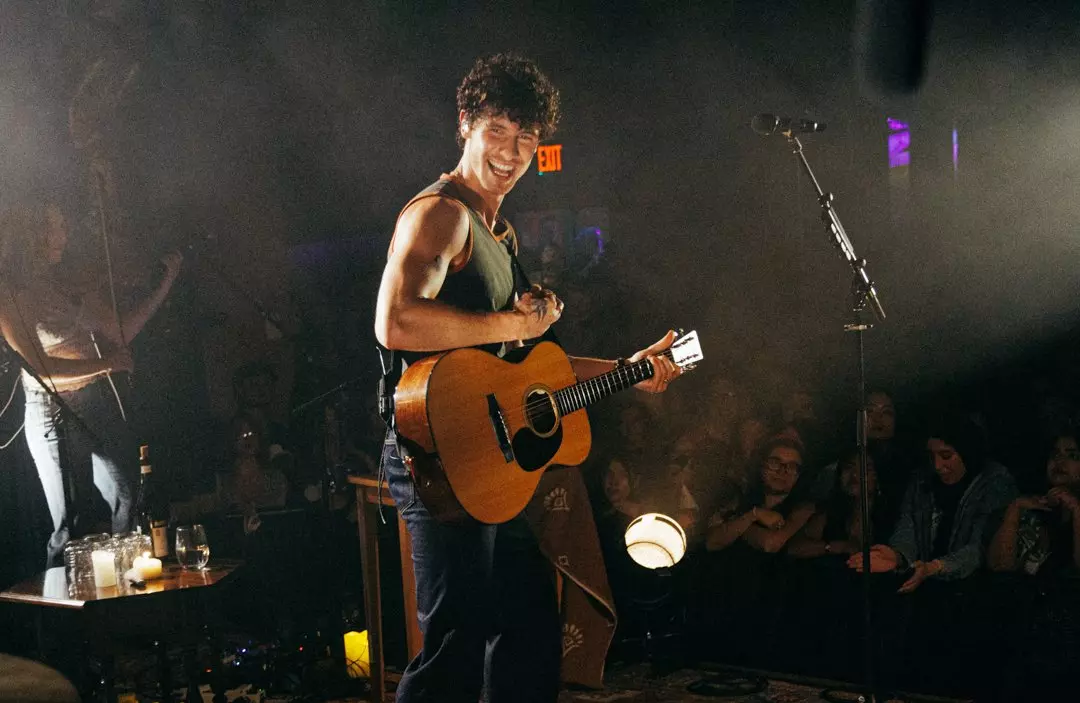
New Music Friday: Listen To New Songs From ATEEZ & G-Eazy, Shawn Mendes, Latto, & More

Watch Alanis Morissette Win At The 1999 GRAMMYs

Dancehall Legend Spice Reflects On 'Mirror 25,' Her Near Death Experience & Owning Her Own Vision

The Recording Academy Philly Chapter Celebrates 30 Years With An Inaugural Block Party & Fireside Chat With Tierra Whack
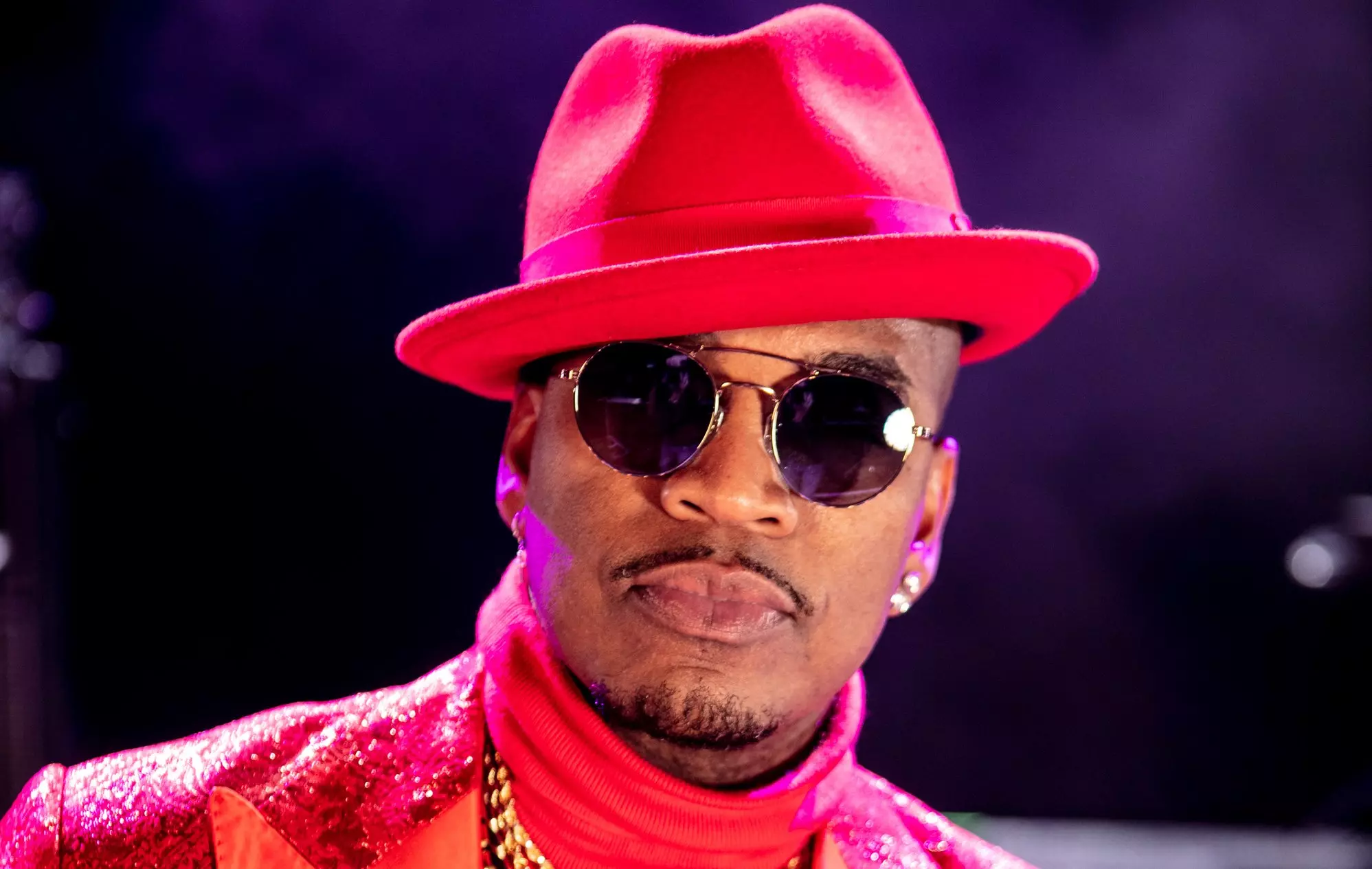
Behind Ne-Yo's Biggest Hits: How Jay-Z, A Wardrobe Malfunction & Stargate Influenced "So Sick," "Closer" & More

Photo: Xavier Scott Marshall
interview
How Ravyn Lenae Found Comfort In Changing Perspective
"I really wanted to give people a glimpse into my life," Lenae says of her new album, 'Bird’s Eye.' The singer/songwriter discusses taking the right risks, and the song that helped repair her relationship with her father.
With massive crowds and countless critics raving about her debut album, Ravyn Lenae knew what she had to do: completely ignore all of the expectations that led to it.
"I knew in order for me to keep evolving as an artist and a person, there was no choice but to let those boundaries go,"she says from her home in Los Angeles.
After building up a growing following in Chicago alongside other members of the Zero Fatigue Collective (which includes producer Monte Booker and rapper Smino), Lenae relocated to the West Coast. She made a massive mark on 2022’s Hypnos, which featured a beguiling mix of alt R&B, house and soul alongside Renae’s magnetic vocal presence.
And rather than coast, Lenae dug deeper for the followup, Bird’s Eye (due Aug. 9). Working with frequent Kendrick Lamar collaborator and in-demand producer DJ Dahi, Bird’s Eye flutters across genres and influences — pulling from Fleetwood Mac on one track, drawing in Childish Gambino on another, and adding Jimmy Jam’s bass elsewhere. Indicative of these multifarious influences are two pre-release singles: the retro pop-leaning "Love Me Not" and the soulfully skipping "Love Is Blind."
Lenae uses that shapeshifting methodology as a way to interrogate the concepts of love and relationships — never content to rest on her laurels, learning how best to grow and adapt. "Making the songs and getting to the bottom of what they meant for me was me kind of retracing my steps a little bit and really acknowledging all these moments in my life, in my childhood, that were pivotal for me and my identity," she says.
Nearing the release of Bird’s Eye, Lenae spoke with GRAMMY.com about directing the video for "Love Me Not" in Chicago, blending Brazilian music with Prince inflections, and how the album helped her reconnect with her father.
A lot seems to have happened in the two years since 'Hypnos.' On a month-to-month, day-to-day basis, how much do you shift creatively?
It feels like night and day to me, even though it's been a really short amount of time. During this time between Hypnos and this album — the recording and creating process — a lot unlocked with me. [There was] a lot of personal growth that happened that allows me to approach music in a much freer and kind of impulsive way.
With the last album and that process, I think I did place a lot of parameters around what I had to be, what I had to sound like, what it had to feel like, who I had to connect with. And I kind of just released all of those expectations with this and made music that I wanted to hear.
How easy was it to actually release those boundaries and work more more in the moment?
I knew in order for me to keep evolving as an artist and a person, there was no choice but to let those boundaries go, if I wanted to keep pursuing music in a way that felt honest. And then being able to collaborate with people such as Dahi, who has kind of mastered that in a lot of ways, and learning from him and seeing his process, seeing how easy and natural it is to just fall into what feels right…
I think the longer you're in an industry or you're in something, the more rules you place on [creativity] and the more you overthink it and try to mold it in a way that doesn't feel impactful. As an artist, being around him and him encouraging that type of process, I think that was a lot of it, too.
Dahi's worked with some incredible artists, and clearly in a way that accentuates that artist rather than making it about DJ Dahi. That must have been so perfectly aligned with your openness, to go in and let yourself learn what you wanted to do. They always say if you know too much and plan everything out, you’ll end up stifled creatively.
It's so true. And that's why I describe it as me kind of returning back to that 12-year-old me, that 13-year-old me, before I cared about opinions, what people thought about me and what I was doing, what I was wearing. I think we start off that way, and then the older we get, the more we get so self-conscious and we judge ourselves more harshly than everyone else.
Why do we do that?!
[Laughs.] I think it's just human nature. And then we try to unlearn all of it.
Even just in daily life, it's so hard to not think about what I could have done at any given moment. And when you’re creating music, there are 5 million ways you can create the same idea and you have to just land on that one.
A hundred percent. During this process, we would have a song idea and then three different versions of that song that hit completely different feelings — maybe a more soft rock version of it, maybe a more indie version of it, maybe a more soulful version. Then it was about having to settle into what is "the one" and what feels the best, versus like what's going to chart or what's going to get in the club. Having to release all of that and just really lean into what feels good is what works every time.
That relates even to how the album was announced, with two tracks that almost speak in conversation with one another. Those songs balance such clever hooks with more nuanced conversation about how conflicted and complex love and relationships can be. How did you find that balance between emotional realism and such immediate music?
It was just really feeling empowered and confident in my decision making. And that's something that's developed over time, too. Really listening to my voice and what I want out of music in my career and my rollout, you know?
Listening to that, obviously having people around me who are like-minded in that way like my management and my team. We all kind of empowered each other to lean into those feelings. At no point in this process did anything feel forced or like I was reaching for something.
That’s so interesting. You want your team to feel supportive but you also want to feel empowered to take risks away from that support. And that reminds me of “Love Me Not,” which has some really smart risks. It's that vintage pop feeling, right down to the clap-along beats, and the vocals feel right in your ear. So when you started working on that track, for example, did you always imagine it being that nostalgia, that warmth?
I thought that there was just something so cool and timeless, a classic feeling about it. And my songs are the ones where you can really pinpoint what the influences are, or when this was made, or the person behind it. Having a song like that, that really reminded me of Outkast. Like, What is this?
Even before it dropped, I remember having some anxiety around maybe my fans not liking it because it feels a little different from Hypnos. I think anytime you kind of jump outside of the bubble you've kind of created, it's scary because there are people living in that bubble with you who like the temperature in there.
It’s so important to be constantly revitalized in your work. If you’re doing the same thing, even if your fans are demanding it, you’re not going to get that. And hopefully when your fans see all that you can do, they’ll follow it.
Yeah. And there's so much left in me to explore into and put out into the world. And look at an artist's career, someone like Tyler, the Creator: Seeing where his sound started and how he's almost trained his fans’ ears to be receptive to something new every time. They've completely grown up with him in a lot of ways and expanded their palate. Kind of forcing the hand of listeners is something that's really interesting to me. [Laughs.]
I love that idea of pushing yourself and pushing your fans, but still within the realm of what's good. [Laughs] Not just experimenting for the sake of it. Speaking of growing and experimenting, I wanted to ask about the “Love Me Not” music video that you directed. It feels so well shot but still so intimate and casual.
I knew with the album and how I wanted the imagery to feel, it would be very homey. Making the songs and getting to the bottom of what they meant for me was me kind of retracing my steps a little bit and really acknowledging all these moments in my life, in my childhood, that were pivotal for me and my identity, those first moments where I felt like I was getting closer to myself in a way.
A lot of that started on the South side of Chicago, at my grandmother's house, in the basement. Even the cover of the album symbolizes that transition for me. That's where I dyed my hair red for the first time in the basement, in the sink, so coming back to the sink and dyeing my hair ginger on the cover was something that felt so powerful and defining for me. It just made perfect sense that we were going to go back to Chicago for the first video, in my grandmother's house, with all my family members involved. Those are my grandparents, my mom, my sisters, so that's why it feels so loose and candid. I really wanted to give people a glimpse into my life and what it felt like walking into my childhood home.
Getting to see a place through someone else’s eyes is so extraordinary. It really makes the little details pop. For example, the plantains cooking on the stove at the beginning.
Yeah. I associate plantains with my grandparents, my family. We’re of Panamanian West Indian descent, so those smells and those sounds, I really wanted to incorporate into the video.
That really speaks to bringing some comfort along with the risk-taking, same as having your family around. The features do a great job of bolstering you, setting up that stability, particularly Ty Dolla $ign on "Dreamgirl."
I think we just had the idea to kind of take the song into a different world in a way. When we first started the first section of the song, I just knew there was magic there. Those Prince drums and that Brazilian guitar — why do those make sense together? It shouldn't ever make sense together. But when I heard it? Oh my god, this feels like something fresh and new, but also like I've felt this feeling before.
Dahi's brain is just incredible, and then even bringing in Jimmy Jam on it to do bass was a dream come true. I knew it kind of felt like it existed in that Janet stratosphere, and I thought it would be such a cool touch for him to do that personally. Dream come true on all spectrums. I love Ty Dolla $ign, obviously grew up listening to him. He's incredible and I was so honored that he wanted to do it.
Besides Janet, were there any particular artists who were kind of central inspirations for this album specifically?
Sonically, Janet is always in the mix. With this one in particular, some Gwen Stefani, No Doubt, a little bit of Fleetwood Mac in there. I just love taking these worlds that are very different from each other and kind of mashing them and seeing what happens. It's like my favorite thing ever.
You’re trained in classical music, and it's so clear that you understand the range of emotion that you can convey. I'm just curious what happened when you went into recording — or even before that, in the writing. What was it like digging into yourself to find the narrative that matched the mashing?
Honestly, I don't think there was much premeditation with the writing and what I wanted to touch on in a way. Really leaning into those impulsive initial first feelings that a song gives me is something I really valued with this album. And moving forward, that'll be my process.
What was premeditated with the writing process with this album was, with every song, trying to really peel back those layers in my brain and those barriers lyrically. Like, What would I naturally say? Think of that and then think, Okay, how can I make this even more literal, even more personal? Even in working with my girl [songwriter] Sarah Aarons, I learned a lot from her as far as songwriting and how to really paint a picture that feels clear and concise and emotional. Not trying to find the prettiest words or the most interesting words, but really writing what feels real. And that's something that I've really, really valued and learned with this process.
Even with “One Wish” with Childish Gambino, the whole album feels like this big conversation on relationships. Being more direct feels like some advice someone would get with a relationship itself, let alone writing about it. Did that process help you actually process what was happening in your life too?
Oh man, 100 percent. And that's why music is so beautiful to me. It's really a means of opening dialogue between me and myself, and then me and the people in my life. With a song that's so important to me like “One Wish," it’s not just because it's a great song, but because this has really catapulted me into this different part of my life and repairing relationships, opening up difficult conversations — like with my father in particular. Hearing such a simple song and the response I've gotten from it has only validated me much more in the fact that these real stories, real emotions are what connects.
Have you played the album for your father?
We started repairing or rekindling our relationship maybe two years ago. The making of Bird’s Eye was at its peak and I felt like it was important for me to have a song on the album that addressed my relationship with him in order for me to release it and start to move on in a positive way.
So sharing the song with him, inviting him to be in the music video was huge for us. And then even after debriefing about maybe some feelings that came up when he heard certain lyrics or when he saw certain scenes in the video, it just opened up this really honest, candid dialogue between us and I couldn't be more grateful that I have this outlet.
More R&B News

Behind Ne-Yo's Biggest Hits: How Jay-Z, A Wardrobe Malfunction & Stargate Influenced "So Sick," "Closer" & More
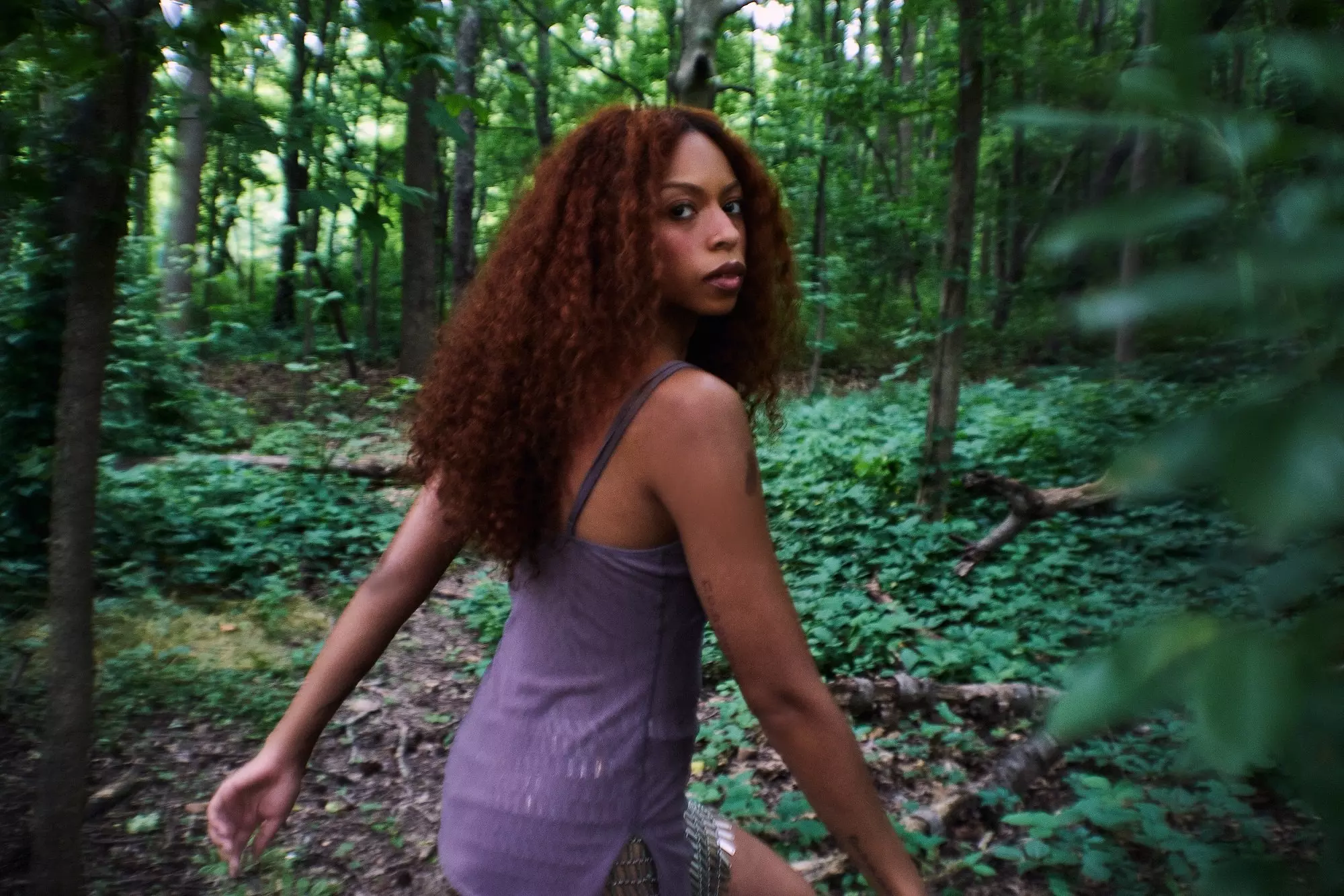
How Ravyn Lenae Found Comfort In Changing Perspective

Ayoni Performs "Bitter In Love"

Watch Stevie Wonder Win Album Of The Year
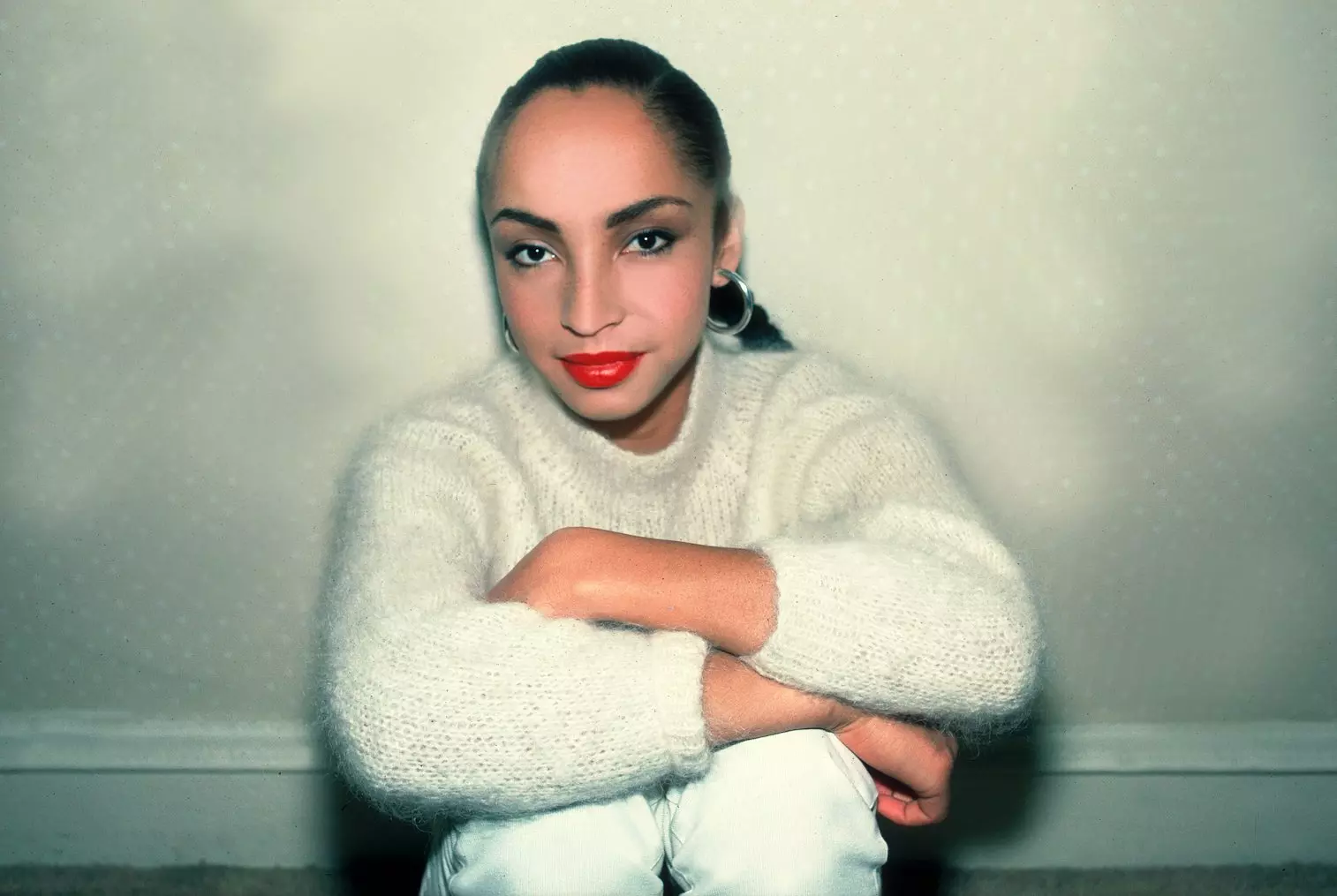
8 Ways Sade's 'Diamond Life' Album Redefined '80s Music & Influenced Culture
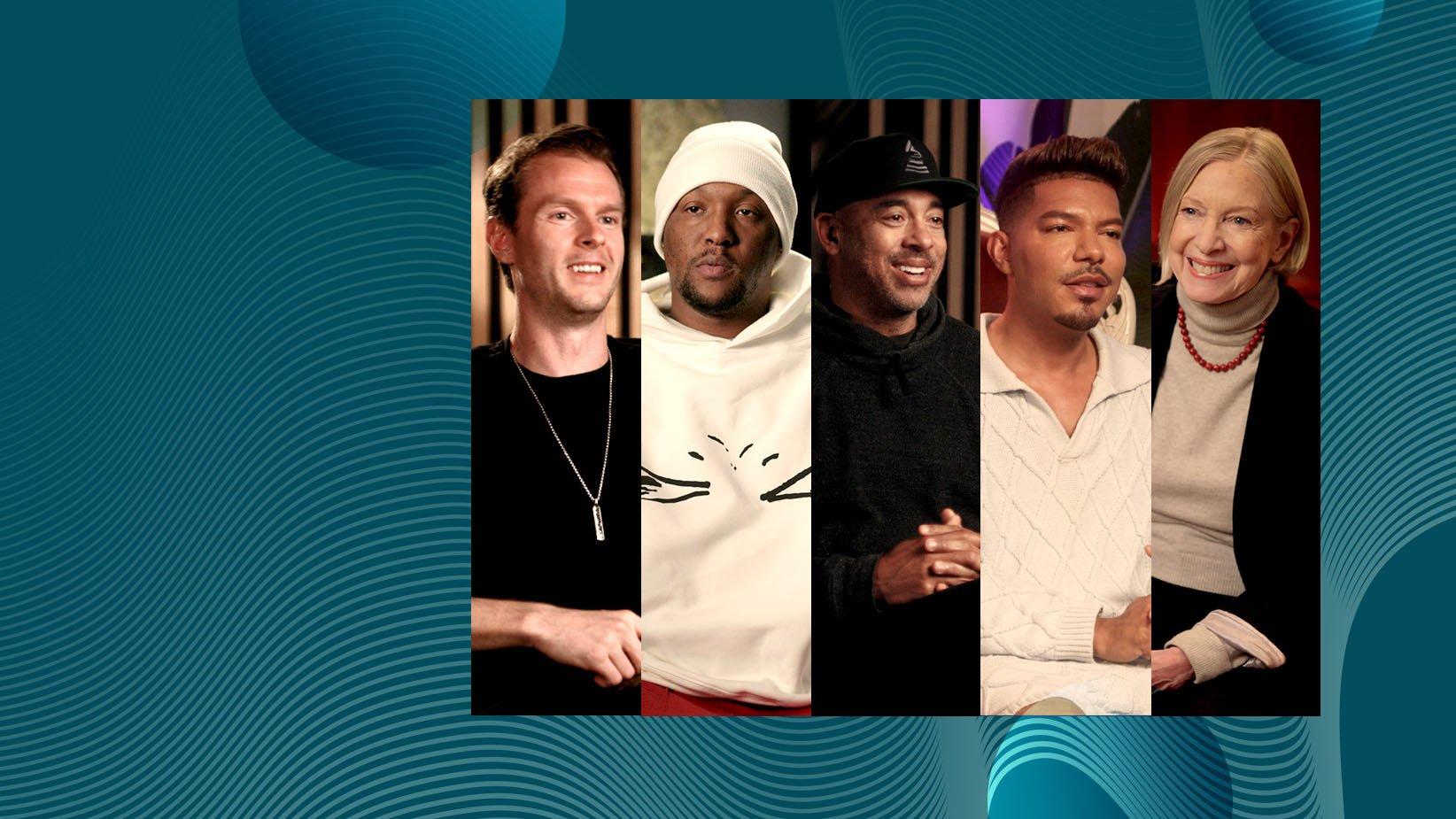
Photos Courtesy of the Recording Academy
news
The New GRAMMY GO Music Production Course Is Now Open: Featuring GRAMMY Winners Hit-Boy, CIRKUT, Judith Sherman & More
Enrollment is now open for GRAMMY GO's new specialization, "Music Production: Crafting Award-Worthy Songs," featuring appearances by GRAMMY winners and nominees. Learn music production and creative strategies from today's industry leaders.
Editor’s Note: Updated to add the Instagram Live video featuring Harvey Mason jr. and Stevie Mackey.
The Recording Academy continues its mission to empower music's next generation with the launch of its second specialization in the GRAMMY GO platform: "Music Production: Crafting Award-Worthy Songs."
This new course, a partnership between the Recording Academy and leading online learning platform Coursera, aims to bolster the technological and audio skills of music producers of all levels. The course, taught by Howard University professor and GRAMMY nominee Carolyn Malachi, features appearances by three-time GRAMMY winner and rap icon Hit-Boy, chart-topping and GRAMMY-winning producer/songwriter CIRKUT, artist and celebrity vocal coach Stevie Mackey, five-time GRAMMY nominee and Recording Academy CEO Harvey Mason jr., and 15-time GRAMMY winner Judith Sherman.
Enrollment for "Music Production: Crafting Award-Worthy Songs" is open now.
Mixing a unique blend of theory and practice, the course teaches music creators of all levels the advanced skills and tools to develop the mindset and confidence of an experienced producer and produce songs of the highest industry standards across all genres. Explore the wide-ranging roles of a music producer, develop critical listening and analysis skills, and master the technical aspects to create music and compositions that cut through the noise. The course's applied learning approach allows learners to sharpen their pre-production skills, utilize Digital Audio Workstations (DAWs) effectively, and produce vocals, instrumentals and samples collaboratively. Through critical listening exercises and discussions, learners will refine their abilities to deliver professional-quality demos.
To celebrate the launch, the Recording Academy hosted an Instagram Live session on Tuesday in which guests Harvey Mason jr. and Stevie Mackey discussed the evolving role of music producers, strategies for working with artists, key elements of top-notch productions, common mixing mistakes, tips for keeping the creative process fresh, and enrollment details for the course.
Building on the success of its first specialization, "Building Your Audience for Music Professionals," GRAMMY GO continues to offer industry-focused education tailored for emerging and established music creators and professionals alike. The innovative platform provides learners with real-time insights from leading music industry figures, ensuring the content remains practical and up to date. GRAMMY GO will also serve as an essential tool in the Recording Academy's global expansion into Africa and the Middle East, empowering music creators through enhanced training, bridging knowledge gaps, and fostering connections within the global music community.
Launched in April in partnership with Coursera, GRAMMY GO is the Recording Academy's first creator-to-creator platform, offering innovative courses tailored for both emerging and established music professionals. The initiative accelerates the Academy's global mission and reinforces its commitment to music education, providing a seamless bridge between all Academy initiatives.
Learn more about GRAMMY GO and the "Music Production: Crafting Award-Worthy Songs" and "Building Your Audience for Music Professionals" specializations.
Watch the Instagram Live session with Harvey Mason jr. and Stevie Mackey in full below:
More Music Education News & Initiatives
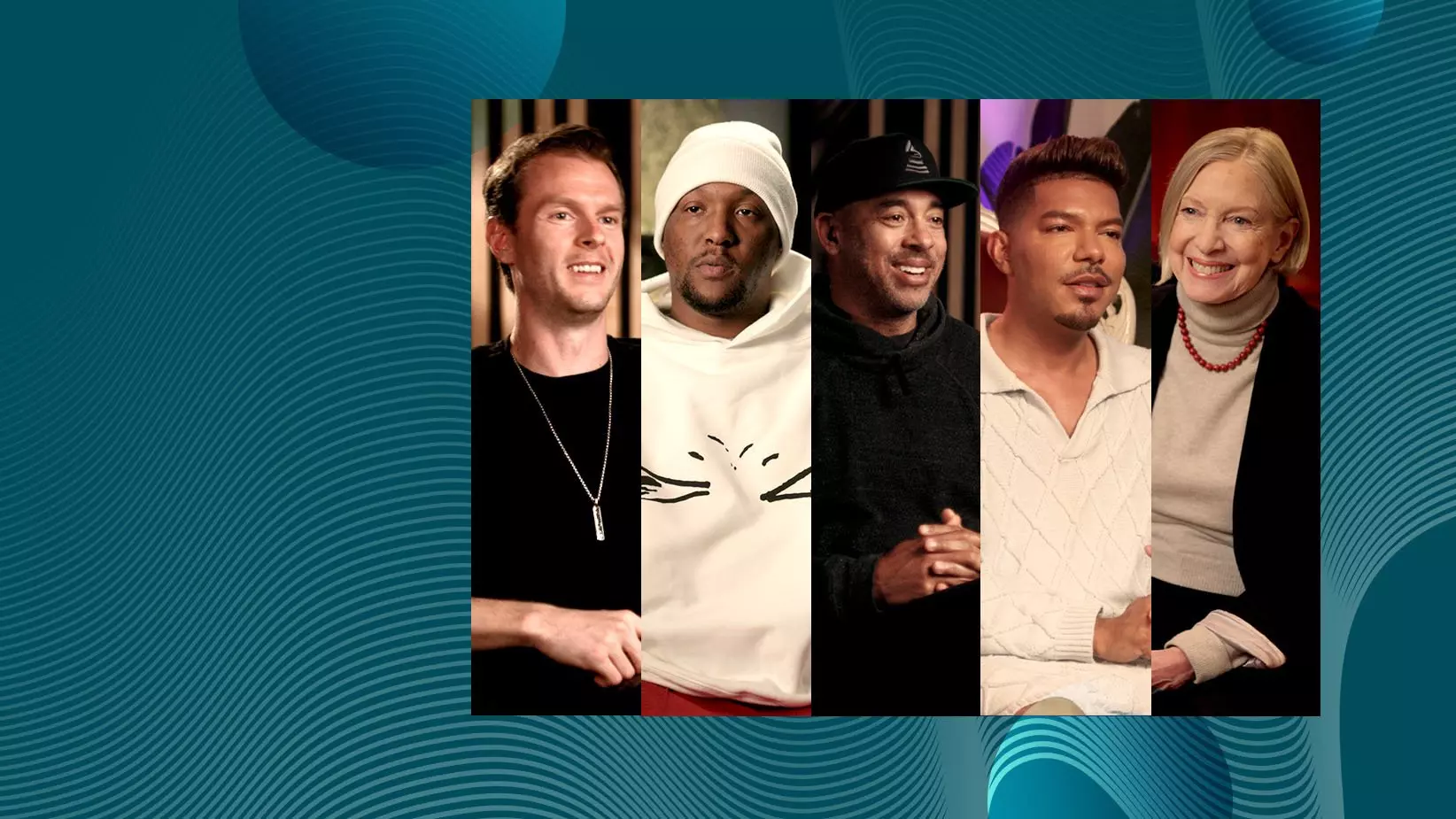
The New GRAMMY GO Music Production Course Is Now Open: Featuring GRAMMY Winners Hit-Boy, CIRKUT, Judith Sherman & More
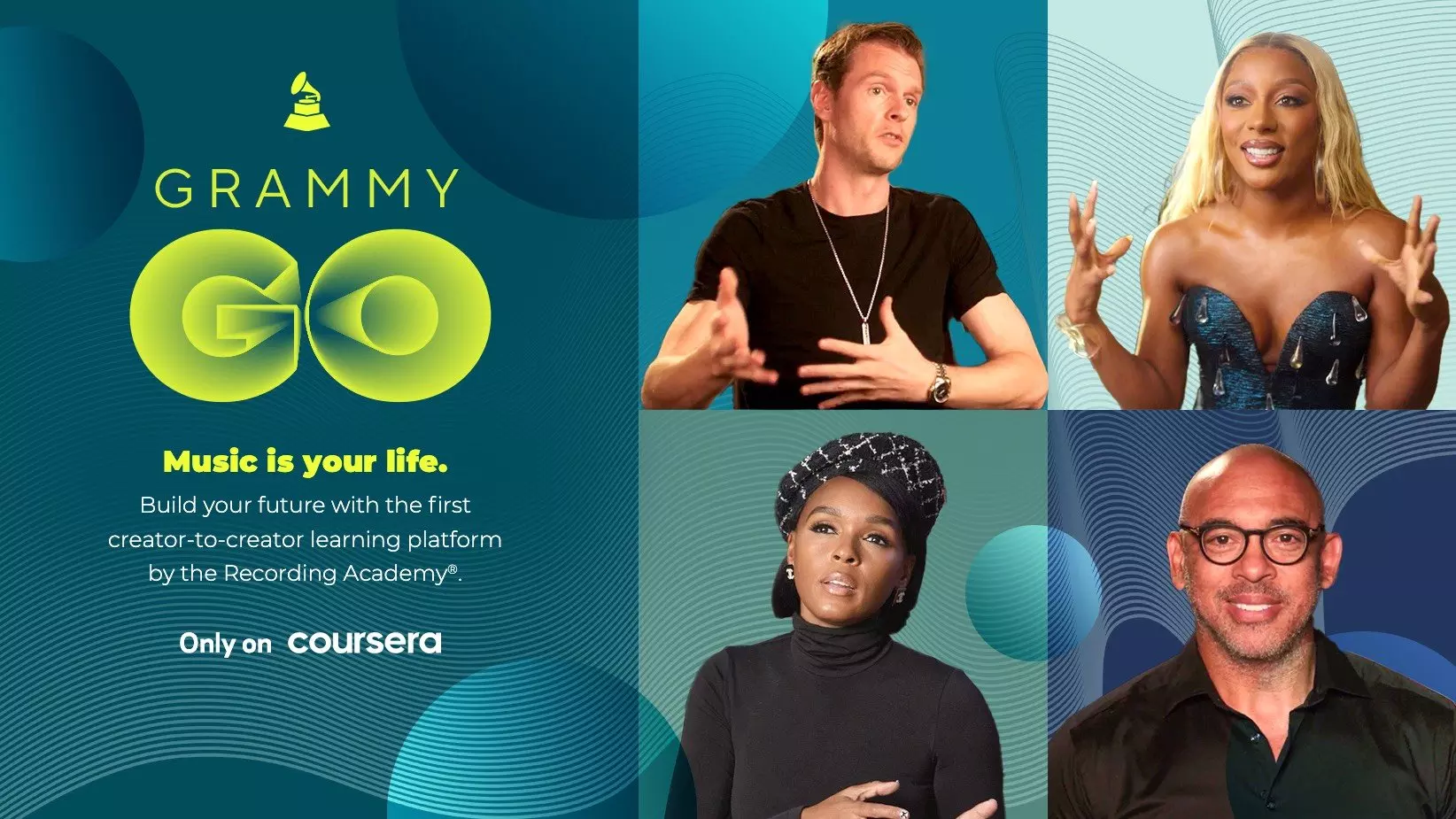
Recording Academy & Coursera Partner To Launch GRAMMY GO Online Learning Initiative

25 Semifinalists Announced For The 2024 Music Educator Award
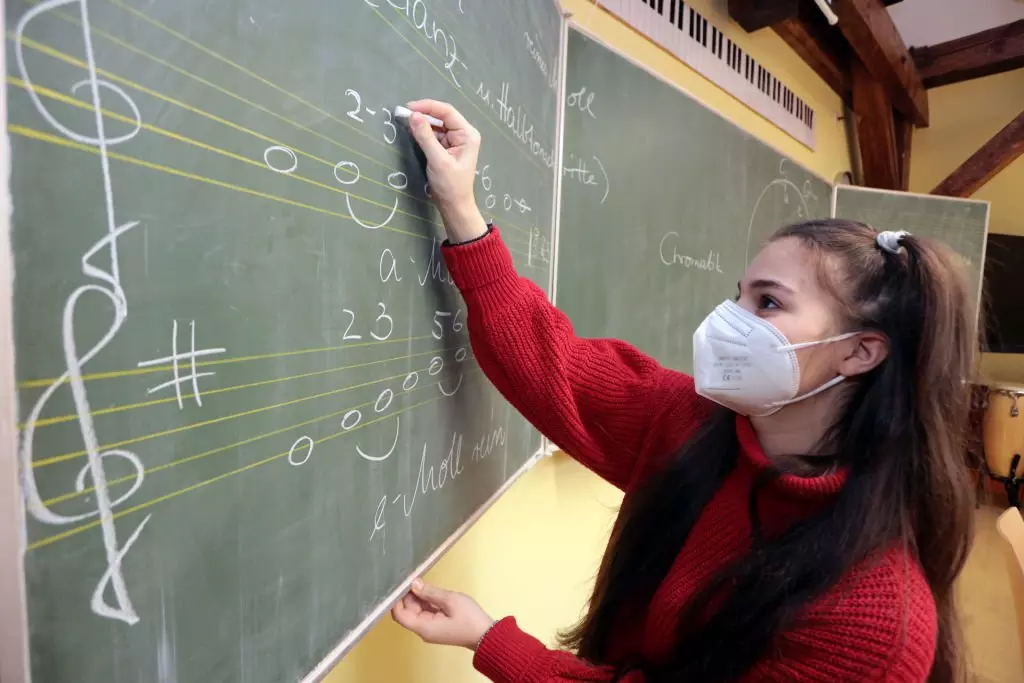
5 Music Teachers Share The Transformative Power Of Music Education
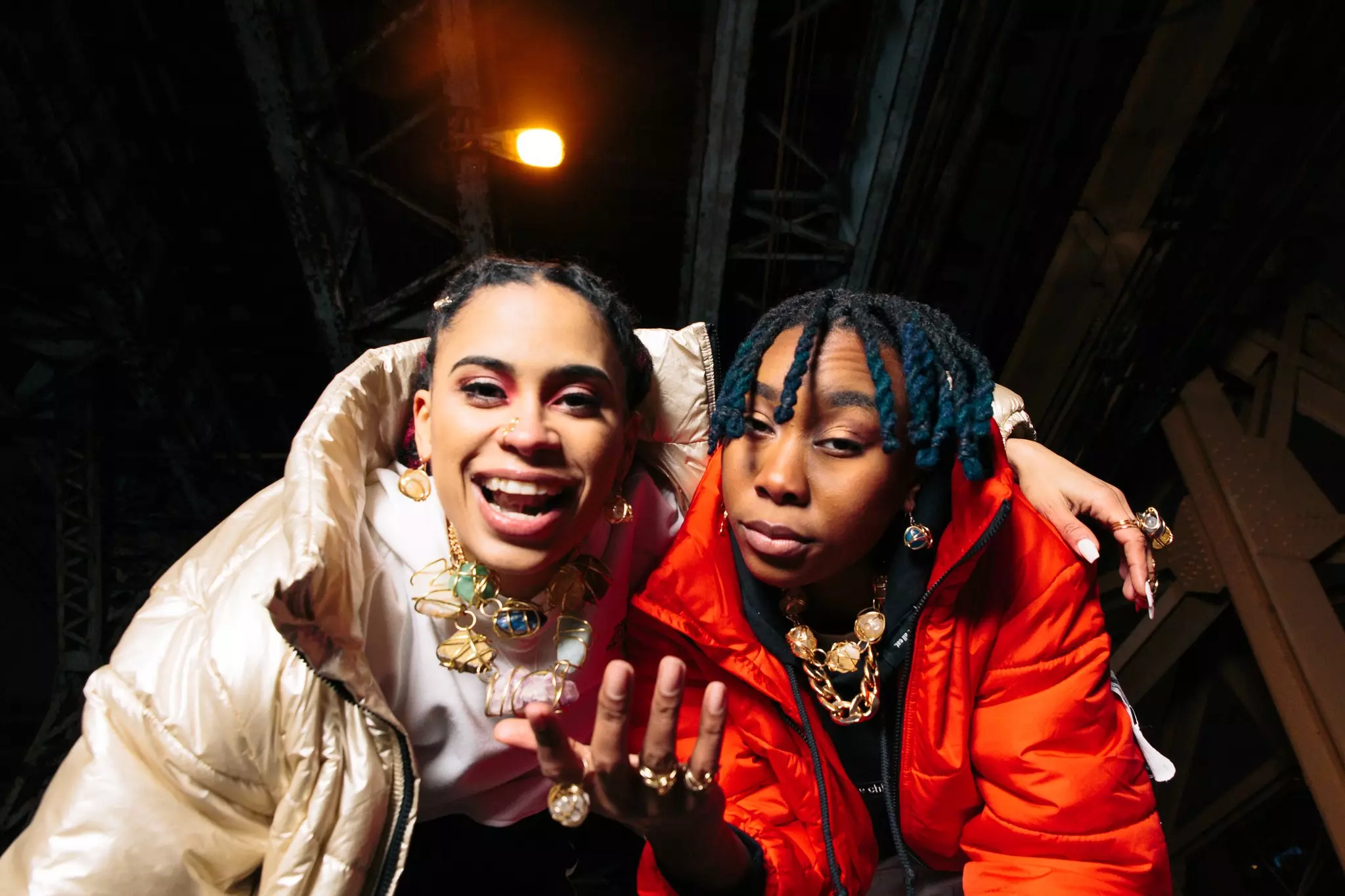
Meet Mother Nature, The Chicago Rap Duo That Teach & Live Self-Expression Through Their Miseducation Of HipHop Youth Workshops
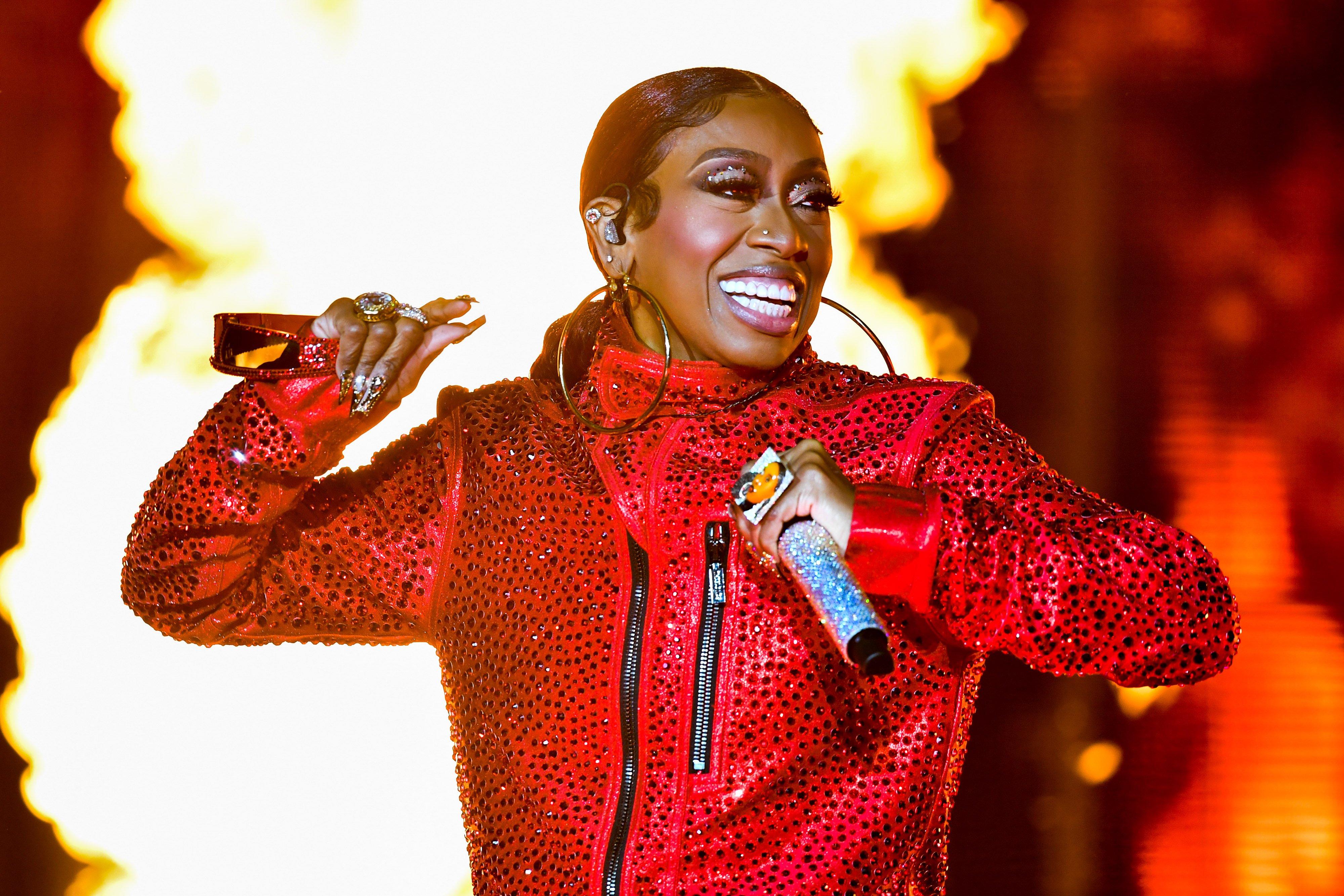
Photo: Aaron J. Thornton
interview
Celebrating Missy Elliott: How The Icon Changed The Sound, Look & Language Of Hip-Hop
In celebration of Missy Elliott's incredible legacy — and very first headlining tour, which kicks off July 4 — GRAMMY.com spoke with Missy's colleagues and collaborators for an insider’s view on what makes the four-time GRAMMY winner unique.
We’re fortunate enough to be living in the middle of a Missy Elliott resurgence — not that she ever went away.
Three decades into her groundbreaking career, Missy is readying her very first headlining tour, which begins July 4 in Vancouver, British Columbia. The Out of This World Tour runs through August and features her longtime collaborators Timbaland, Busta Rhymes, and Ciara.
The fact that it is her first headlining tour may be surprising, given that she’s been on the scene since debuting with the group Sista in the mid-1990s, and has been a chart-topping star since becoming a solo artist in 1997.
The hip-hop icon released her last full-length album, The Cookbook, nearly two decades ago but time hasn’t diminished her influence at all. In fact, we’re all still catching up to the futuristic vision that Missy and Timbaland introduced to the world in the late 1990s in their songs and videos.
Missy began her career as a member of Sista, which was a part of the Swing Mob, a musical collective working under Jodeci’s DeVanté Swing. That crew included a number of future world-changers, including Missy, Timbaland, Ginuwine, Tweet, Stevie J., and two legends who have since passed on, Magoo and Static Major. After Sista was dropped from their label, Missy, by all accounts, would have been perfectly happy to settle into a life as a songwriter and producer. But something bigger was beckoning.
Persuaded by Elektra’s Sylvia Rhone with the promise of her own label, Missy agreed to turn in one album as a solo artist. That album, 1997’s Supa Dupa Fly, made Missy not just a star but an icon, and changed the course of her life. It began a career that, over a quarter-century later, found her inducted into both the Rock and Roll Hall of Fame and the Songwriters Hall of Fame — she was the first female rapper ever to be nominated for the latter.
And that’s just the beginning of the accolades. There are the four GRAMMY wins and head-spinning 22 nominations. She was also honored alongside Dr. Dre, Lil Wayne (who has not been shy about calling Missy his favorite rapper), and the woman who gave Missy her first solo record deal, Sylvia Rhone, at 2023’s Black Music Collective’s Recording Academy Honors event. Missy was also a key participant in the GRAMMYs tribute to a half-century of hip-hop that same year.
Throughout it all, Missy has remained humble. When speaking to GRAMMY.com in 2022, she reflected on how she and longtime collaborator Timbaland had no idea of their impact at the time.
"We really just came out with a sound that we had been doing for some time, but we had no clue that it would be game changing, that we would change the cadence — the sound of what was happening at that time," she said. "No clue!"
"Her whole existence is based on moving us and influencing us," says her longtime manager Mona Scott-Young. "She wants to be able to touch people."
And that she has. To celebrate the Missy-aissance, GRAMMY.com spoke with Missy's colleagues and collaborators for an insider’s view on the course of her career and what makes the four-time GRAMMY winner unique.
The quotes and comments used in this feature were edited for clarity and brevity.
Missy’s Impact Began With Her First Guest Verse
The first time many people took note of Missy Elliott was her verse on the 1996 remix of Gina Thompson’s "That Thing You Do."
Gina Thompson (singer): I was in the process of completing my first album, Nobody Does It Better. Actually, it was complete. So what happened was, my A&R at the time, Bruce Carbone at Mercury Records, wanted to have Puffy do the remix.
Puffy was like, "We have this person that's really talented. Her name's Missy, and she used to be with the group Sista, and she's a phenomenal writer. She's working with a lot of other artists, she’s definitely the next big thing in the R&B/hip-hop world." We were like, cool.
I believe we actually heard it over the speaker phone in Bruce’s office. I know that I said that I loved it, and I felt her style was unique and different. It grew on me in a great way. I just felt like it was a smash. She definitely had added a great touch to it. I was super-excited about it.
Merlin Bobb (former Executive Vice President, Elektra Records): I was blown away by the simple fact that I knew she was a great songwriter. But when I heard her rhyming, I thought it was the most unique style that I had heard in some time.
Digital Black (former member of Playa, part of the Swing Mob): A lot of people only knew her as a writer or an R&B artist, but when she came on that Gina Thompson record with that rap, it changed everything. It allowed her to be even more herself.
Mona Scott-Young (manager): Oh my God, have you heard that song? It’s her ability to use expression and evoke emotion without even using words. She said, "He he he haw," and we all found a new way to bounce. There was something fun and magical and different that spoke to what we would come to know was this incredibly vivid imagination that would take us places sonically and visually that we didn’t even know we needed to be.
She Changed The Sound Of Hip-Hop With Her Debut LP
Missy’s first solo album, Supa Dupa Fly, came out the following year. It gave new energy to a hip-hop scene that was still reeling from the deaths of 2Pac and Biggie.
Anne Kristoff (former Vice President of PR, Elektra): She 100 percent did not want to be an artist. She's like, "I'm not an artist. I want to be Diane Warren. I'm going to write the songs. I'm going to be behind the scenes."
Merlin Bobb: I started talking to her regarding being an artist. She was totally against it. "No, I want to be a songwriter." And also, just to be honest, [Sista] had been dropped from Elektra prior to my conversations with her, so she wasn't too eager, I think, to jump back aboard.
It took about six or seven months of us discussing ways to do this. I spoke to Sylvia [Rhone, then-head of Elektra], and I said, "She's an incredible songwriter. Let's offer her a production deal or a label deal where she can not only just look at herself as an artist, but at the same time develop and nurture artists under her own banner." Sylvia thought it was a great idea.
We both talked to Missy about it, and she said, "Okay, I'll do one album." I was ecstatic because she was writing some great songs, but she also gave us her first album, which was, needless to say, a classic.
Kathy Iandoli (author, "God Save the Queens: The Essential History of Women in Hip-Hop and Baby Girl: Better Known as Aaliyah"): In God Save the Queens, I referred to her as the Andy Warhol of hip-hop, in the sense that she took the art and the cultural aspect of it, and she just put this spin and interpretation of the art that no one had ever really done prior.
With Missy’s arrival around ‘97, we were at a point in time where hip-hop was in a complete state of confusion. We did not know where it was going to go. Missy made high art hip-hop that was commercially accessible. And for that, she changed the entire game.
Gina Thompson: When she had her first project with the whole vision — not only her sound, but her songwriting style, the look — everyone was like, "This girl went out on edge. I'm gonna do a little bit of the same thing and not be so worried if I don't sound so average, what people are going to think. Because she's out on the edge doing it." And I promise you, ever since she came out, that you started hearing a lot more of female rappers tweaking their voices.
Lenny Holmes (guitarist): In hip-hop, everybody would think that it's a whole bunch of computer generated stuff. Missy Elliott does not approach it like that. She loves live instrumentation, but she likes to take bits and pieces of it. She simplifies it, and it is placed uniquely in the track at certain points. That's what makes up the structure of the song.
Mona Scott-Young: Everything from the way she looked to what she was talking about to the way she delivered that music and what she represented in terms of being nonconforming, not looking like the other female rappers of the day — I think all of those elements were the perfect lightning in a bottle. The way she rode that beat, both lyrically and with her delivery, was very, very different from everything else that we were hearing.
Read more: Revisiting 'Supa Dupa Fly' At 25: Missy Elliott Is Still Inspired By Her Debut Record
She Reinvented The Music Video
You can’t think of Missy Elliott without picturing her iconic music videos, many done in collaboration with director Hype Williams.
Brian Greenspoon (former International Publicist, Elektra): I mean, she came out of the gate wearing a garbage bag, and made it the coolest thing anyone had ever seen.
Merlin Bobb: She said, if I put out this album — initially we were talking about a single deal, but we went into an album — there’s two things very important to me: the dance aspect and the visual aspect.
Kathy Iandoli: The thing that I really loved about Missy's music videos, she was a big budget music video person. She got the men's music video budget.
Anne Kristoff: When you think about the "Rain" video — I'm just guessing, I don't want to put words in her mouth — but I think when she saw that the vision in her head could become real out in the world, that anything she could think of could happen, that maybe it made it a little more fun for her to be an artist. I hope.
Digital Black: Missy is one of the funniest people you’ll ever meet. People maybe don't know. She loves joking. So that was just her being her.
Gina Thompson: You started seeing a lot of people doing certain robotic-type images or moves in their videos to almost mimic her "Supa Dupa Fly." She’s the creator of that.
Earl Baskerville (manager/producer): Missy would get with the director, and she would sit there and go over the whole treatment. A lot of the visuals came from her. She was very hands on. Today, you can shoot a video in four or five hours. But Missy’s video shoots was so long, I used to hate it. We would be there fifteen hours for a three minute video!
She Was Avant-Garde But Still Pop
Missy’s musical and visual style was like nothing anyone had ever seen. Yet she still became a star. How did she manage to be both innovative and accessible?
Kathy Iandoli: You can't make something that the general public can't access, or speak over their heads.
Digital Black: Even if you said it sounded weird, it still had some soulfulness to it. I think that was what allowed her to touch so many different people.
Merlin Bobb: When you have an artist that stands out, but it doesn't go over your head musically, artistically, lyrically, then it works. People, when they heard and experienced something new and fresh that was easy to digest, but it was unique, they gravitated to it.
Brian Greenspoon: How was it sold to a mass audience? I mean, the sound was breakthrough. What Timbaland was doing with drum sounds, and the way they were building these very sparse rhythms and sound beds, they were breaking ground. But the thing that worked is that they had these incredible songs that Missy was writing and that she had these incredible featured artists on.
Gina Thompson: To try to figure out what her brain is doing, I’ve been gave that up.
Earl Baskerville: Nobody could figure out what we were doing, because they couldn’t understand the sound.
Lenny Holmes: Her rhythmic style of how she would do the vocals was just unheard of. Like, doubling up accents. The things that she started doing — you would hear a deejay do a scratch on a record. You would not hear a singer do it. I was like, What in the world?
Anne Kristoff: She was doing these really creative things that no one else was doing visually. And the sound was different than whatever everyone else was doing. So it wasn't a hard sell for the press.
She Was A Master At Working With Other Artists
Missy was far more than just a solo star. All throughout her career, she continued her first love: writing and producing for other artists — including Ciara, Aaliyah, Destiny’s Child, and Whitney Houston.
Lenny Holmes: Missy had a great relationship with singers and rappers, because she could do both. A lot of people don’t know, but Missy can sing. So when we worked with groups that had singing parts on them, a lot of times she would go ahead and lay down the guide track for the actual artist to sing.
Kathy Iandoli: Missy just really understood the artists that she worked with. She saw their strengths, and she helped them utilize them to the best of their capabilities.
Angelique Miles (former music publishing executive): She was able to relate to the artist and express that artist. She was able to customize and express that artist's story. Whatever she wrote for 702 didn’t sound like what she wrote for Whitney Houston.
Digital Black: She was good at listening to the artist, seeing what they do, and then, how can you enhance what they do well? Those are the best records. She was great at tailor-making records for people, just from her doing her due diligence on learning who the artist is. Not just going in, "I’m Missy, I can write whatever." I'm gonna write something specifically for you that enhances what you’ve already done.
Merlin Bobb: She would have made an incredible A&R person. I would have hired her back then. She was able to come up with lyrics and melodies and songs and chords and production that to me stood out. She worked with both male and female artists. She really knew how to get an artist not only to sing a great song, but to sing very uniquely and in their own way, because she was a great vocal production coach.
Mona Scott-Young: She's always listening beyond what we hear. Even if there's a song an artist has [that she’s not involved with], she'll say, "Yeah, I would have done this thing differently with this artist. Because if you listen to what she did on this one part of the song, you can hear that there's more range there. But for some reason they didn't push her to go there." That to me is just one of the things that makes her such a great producer and star finder, because she always is looking for what more they can do and how they can challenge themselves to be better.
Earl Baskerville: She had signed an artist that I used to manage named Mocha. And she told Mocha to go in there and just rap. I think Mocha might have did 30-something bars, 60 bars. know. Missy listened to all of the stuff she did, took it, and dissected it. She went in there and took eight bars, not from the beginning of the track — I don’t know where she found it, in the middle or something — and put it on the Nicole Wray record "Make It Hot." When Mocha comes in, that’s actually the middle of the verse somewhere! That was crazy to me.
Her First Love Was Always Songwriting
Through it all, Missy’s strength remained (and remains) her songwriting. But what makes her songs stand out, and stand the test of time?
Earl Baskerville: Missy didn’t want to be an artist. She just wanted to be a songwriter.
Merlin Bobb: Her songwriting was very soulful, but it also had great melodic edge to it. They’re very realistic lyrics to a young scene that was happening in R&B and hip-hop at the time. So it was somewhat of a fusion of R&B and hip-hop lyrically, and she just had a very strong sense of melody and great hook lines.
Mona Scott-Young: She wasn't talking about the same thing that we were hearing from a lot of the other females in the genre at the time — overt sexuality and material possessions and that kind of stuff. She was engaging, having a good time lyrically, and holding her own with her male counterparts.
She was giving us music that was great, and it didn't matter that it was coming from a female. She was kind of this androgynous being that was delivering great music. You listen to the song, you just want to party.
Read more: Missy Elliott Makes History As First Female Rapper Nominated For Songwriters Hall Of Fame
She Changed The Artists Who Came After Her
As with all major innovations, it didn’t take long after Missy broke big for her influence to be felt.
Kathy Iandoli: The special relationship between Aaliyah, Missy, and Timbaland was the fact that together they all created a new sound that would set the standard of hip-hop and what we now define as alt-R&B. They invented a new subgenre. It was something that Missy was able to continue along and then create a sound on her own terms.
Gina Thompson: Many people were trying to emulate her whole different style.
Lenny Holmes: [Were people copying her?] Most definitely. But there's only one Missy. And I got to say, there’s only one Timbaland too. You hear that trademark voice or the trademark lick, and you just know that's them.
Brian Greenspoon: I think she influenced just about everybody that came after her. The sound of hip-hop changed after her and Timbaland dropped that music. The way the people produced their drum sounds and their beats, the use of hi hats, it all changed based on Missy and Timbaland.
Merlin Bobb: Most hip-hop/R&B collaborations at that time were hip-hop records with vocal hooks from R&B artists. She kind of flipped it, where she worked from the R&B side and made the vocals and the production more hip-hop friendly.
Mona Scott-Young: Her whole existence is based on moving us and influencing us. She wants to be able to touch people. So when we see artists who you can hear or see the influence, then you know that she's done her job.
There's so many artists — Flyana Boss, a little bit Cardi, a little bit Nicki. They all, I think, have been influenced by Missy, her look, her sound, in one way, shape or form. And that is the greatest compliment, to inspire a generation and see them take what you've done to another level. But then she's constantly also evolving and keeping everyone on their toes.
Learn more: 8 Ways Aaliyah Empowered A Generation Of Female R&B Stars
Considering Missy And Her Legacy
Everyone interviewed for this piece had so much love for Missy. Here’s a small sample.
Brian Greenspoon: Missy is one of the most professional, talented, creative artists I've ever had the luck to work with. I'm happy to see that she is being recognized for being the icon that we all saw that she was becoming back then.
Lenny Holmes: Even today, in whatever we're doing, we use what we've learned from Missy Elliott. It’s mixed in whatever we do. It’s amazing what she has done for herself, but she has definitely helped people along the way, and we will forever be grateful to her.
Digital Black: She's a one-of-one, God-given talent. She earned every award, every accolade, accomplishment. Her work ethic was phenomenal, and nothing was given. Big sis earned everything, and I just want to say I love her, and it's been a pleasure and an honor to be a part of her career.
Kathy Iandoli: There’s so much of the art that we have right now that we have to thank her for.
Mona Scott-Young: This has been an incredible journey. I always talk about being incredibly blessed to have had the opportunity to play a role when you have somebody like her who has touched so many people globally and whose music and entire presence hold this special place in fans’ hearts.
Every day it's just about, how do we continue to push forth, break boundaries, challenge ourselves to do things bigger and better than we did it the last go round.
Explore The Artists Who Changed Hip-Hop
50 Artists Who Changed Rap: Jay-Z, The Notorious B.I.G., Dr. Dre, Nicki Minaj, Kendrick Lamar, Eminem & More
Hip-Hop Just Rang In 50 Years As A Genre. What Will Its Next 50 Years Look Like?

Watch Outkast Humbly Win Album Of The Year For 'Speakerboxxx/The Love Below' In 2004 | GRAMMY Rewind
A Brief History Of Hip-Hop At 50: Rap's Evolution From A Bronx Party To The GRAMMY Stage
GRAMMY Museum To Celebrate 50 Years Of Hip-Hop With 'Hip-Hop America: The Mixtape Exhibit' Opening Oct. 7

Watch Eminem Show Love to Detroit And Rihanna During Best Rap Album Win In 2011 | GRAMMY Rewind
Listen To GRAMMY.com's 50th Anniversary Of Hip-Hop Playlist: 50 Songs That Show The Genre's Evolution
14 New Female Hip-Hop Artists To Know In 2023: Lil Simz, Ice Spice, Babyxsosa & More
6 Artists Expanding The Boundaries Of Hip-Hop In 2023: Lil Yachty, McKinley Dixon, Princess Nokia & More
Watch 41 Bring The Hype With A Cover Of DMX's Hit "Party Up (Up In Here)" | Hip-Hop Re:Defined
The 10 Most Controversial Samples In Hip-Hop History

Watch Lauryn Hill Win Best New Artist At The 1999 GRAMMYs | GRAMMY Rewind
19 Concerts And Events Celebrating The 50th Anniversary Of Hip-Hop
Founding Father DJ Kool Herc & First Lady Cindy Campbell Celebrate Hip-Hop’s 50th Anniversary
A Guide To New York Hip-Hop: Unpacking The Sound Of Rap's Birthplace From The Bronx To Staten Island
A Guide To Southern California Hip-Hop: Definitive Releases, Artists & Subgenres From L.A. & Beyond
10 Crucial Hip-Hop Albums Turning 30 In 2023: 'Enter The Wu-Tang,' 'DoggyStyle,' 'Buhloone Mindstate' & More
The Nicki Minaj Essentials: 15 Singles To Showcase Her Rap And Pop Versatility
11 Hip-Hop Subgenres To Know: From Jersey Club To G-Funk And Drill
5 Essential Hip-Hop Releases From The 2020s: Drake, Lil Baby, Ice Spice, 21 Savage & More
A Guide To Southern Hip-Hop: Definitive Releases, Artists & Subgenres From The Dirty South
A Guide To Bay Area Hip-Hop: Definitive Releases, Artists & Subgenres From Northern California
A Guide To Texas Hip-Hop: Definitive Releases, Artists & Events

Ludacris Dedicates 2007 Best Rap Album GRAMMY To His Dad | GRAMMY Rewind
Unearthing 'Diamonds': Lil Peep Collaborator ILoveMakonnen Shares The Story Behind Their Long-Awaited Album
10 Bingeworthy Hip-Hop Podcasts: From "Caresha Please" To "Trapital"
Revisiting 'The Miseducation Of Lauryn Hill': Why The Multiple GRAMMY-Winning Record Is Still Everything 25 Years Later
Watch Asha Imuno Personalize Kendrick Lamar's "i" With A Sparkling New Chorus | Hip-Hop Re:Defined
10 Must-See Exhibitions And Activations Celebrating The 50th Anniversary Of Hip-Hop
5 Artists Showing The Future Of AAPI Representation In Rap: Audrey Nuna, TiaCorine & More
'Invasion of Privacy' Turns 5: How Cardi B's Bold Debut Album Redefined Millennial Hip-Hop
10 Songs That Show Doja Cat’s Rap Skills: From "Vegas" To "Tia Tamara" & "Rules"
Watch Olen Put A Dreamy, Melodic Spin On Childish Gambino's "Heartbeat" | Hip-Hop Re:Defined
6 Must-Watch Hip-Hop Documentaries: 'Hip-Hop x Siempre,' 'My Mic Sounds Nice' & More...
Essential Hip-Hop Releases From The 2010s: Ye, Cardi B, Kendrick Lamar & More
6 Takeaways From Netflix's "Ladies First: A Story Of Women In Hip-Hop"
How Drake & 21 Savage Became Rap's In-Demand Duo: A Timeline Of Their Friendship, Collabs, Lawsuits And More
5 Takeaways From Travis Scott's New Album 'UTOPIA'
Essential Hip-Hop Releases From The 2000s: T.I., Lil Wayne, Kid Cudi & More
Songbook: How Jay-Z Created The 'Blueprint' For Rap's Greatest Of All Time
Ladies First: 10 Essential Albums By Female Rappers

How Megan Thee Stallion Turned Viral Fame Into A GRAMMY-Winning Rap Career | Black Sounds Beautiful
How Hip-Hop Took Over The 2023 GRAMMYs, From The Golden Anniversary To 'God Did'
5 Things We Learned At "An Evening With Chuck D" At The GRAMMY Museum
Remembering De La Soul’s David Jolicoeur, a.k.a. Dave and Trugoy the Dove: 5 Essential Tracks
Catching Up With Hank Shocklee: From Architecting The Sound Of Public Enemy To Pop Hits & The Silver Screen
Meet The First-Time GRAMMY Nominee: GloRilla On Bonding with Cardi B, How Faith And Manifestation Helped Her Achieve Success
Hip-Hop's Secret Weapon: Producer Boi-1da On Working With Kendrick, Staying Humble And Doing The Unorthodox
Essential Hip-Hop Releases From The 1990s: Snoop Dogg, Digable Planets, Jay-Z & More
10 Albums That Showcase The Deep Connection Between Hip-Hop And Jazz: De La Soul, A Tribe Called Quest, Kendrick Lamar & More
Hip-Hop Education: How 50 Years Of Music & Culture Impact Curricula Worldwide
Women In Hip-Hop: 7 Trailblazers Whose Behind-The-Scenes Efforts Define The Culture

Watch Flavor Flav Crash Young MC's Speech After "Bust A Move" Wins In 1990 | GRAMMY Rewind
Essential Hip-Hop Releases From The 1980s: Slick Rick, RUN-D.M.C., De La Soul & More
Lighters Up! 10 Essential Reggae Hip-Hop Fusions

How Lil Nas X Turned The Industry On Its Head With "Old Town Road" & Beyond | Black Sounds Beautiful
9 Teen Girls Who Built Hip-Hop: Roxanne Shante, J.J. Fadd, Angie Martinez & More
Essential Hip-Hop Releases From The 1970s: Kurtis Blow, Grandmaster Flash, Sugarhill Gang & More
Killer Mike Says His New Album, 'Michael,' Is "Like A Prodigal Son Coming Home"
5 Takeaways From 'TLC Forever': Left-Eye's Misunderstood Reputation, Chilli's Motherhood Revelation, T-Boz's Health Struggles & More
Watch Eva B Perform "Sunrise In Lyari" Through The Streets Of Pakistan | Global Spin
